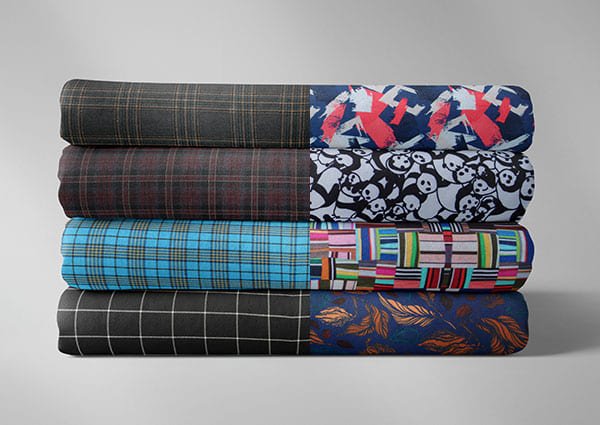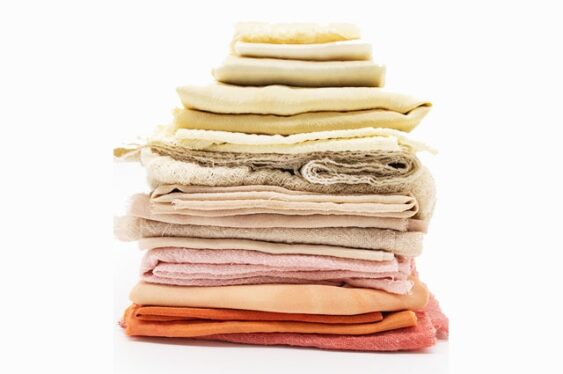Natural Fabric vs Synthetic Fabric

Fabric is an essential material used in many products to make cloth, Sheets, and upholstery on our furniture. Fabric is a material made by interlacing fibers together and fabric can be natural, such as cotton or wool, or synthetic, like polyester or nylon.
Fiber is the smallest fabric component; fibers are typically spun into yarn, and yarns are used to manufacture fabrics. Fiber has a hair-like appearance and a higher length-to-width ratio. The sources of fibers may be natural, synthetic, or both.
Today In this Blog we discuss the natural and synthetic fabric differences and also talk about their features and wearing Style.
Natural Fabric
When you talk about the natural fabric it comes from plants, Animals, or minerals. Natural Fabric mainly occurs form the organic way and is made into fabric for use in cloth, home textiles, and industrial use.
There are two general categories of natural fibers: animal-based and plant-based. Animal-based natural fibers include silk and wool, while plant-based natural fibers include cotton, linen, and jute.
A few of the most well-known and frequently used nature fibers include:
1. Cotton Fabric: Known for its softness, breathability, and absorbency, cotton is widely used in clothing, bedding, and various textiles. They are used for Apparel, Home Textiles, and Industrial products. This makes it a popular choice for garments worn close to the skin, such as T-shirts, underwear, and bedding.
2. Wool Fabric: It is derived from sheep and it is known for its warmth, resilience, and elasticity. Woolen fabric is a Popular fabric which is known for its warmth, durability, and versatility. They provide the best quality woolen fabric and make products for him like( Coat, Blazers, and Three-piece suits) with the best technique and efficiency.
3. Silk Fabric: Produced by silkworms, silk is a luxurious and lustrous fiber, commonly used in high-end clothing, lingerie, and home furnishings. They are used for making various garments and home furnishings, thereby solidifying their status in the realm of luxury fashion and interior design.
4. Linen Fabric: Linen fabric is made from the fibers of the flax plant, linen has been used for thousands of years for clothing, bedding, and household goods. One of the key benefits of linen fabric is its moisture-wicking properties, making it an ideal choice for warm-weather clothing.
Synthetic Fabrics
Synthetic Fabrics are textiles made from man-made rather than natural fabric. The fibers are generally extracted during the chemical process using a spinneret, which is a device that takes polymers to form fibers. The textile industry began creating synthetic fibers as cheaper and more easily mass-produced alternatives to natural fibers.
A few of the most well-known and frequently used Synthetic fibers include:
1. Polyester Fabric: A versatile synthetic fiber known for its durability, wrinkle resistance, and quick-drying properties. It is frequently used in sportswear, outerwear, and home textiles.
2. Nylon Fabric: Nylon can stretch and bend without easily breaking. Bugs, chemicals, or mold do not damage it. Nylon is typically used to make clothes, bags, ropes, and car parts.
Strong and lightweight, nylon synthetic fiber offers excellent elasticity. It is commonly used in hosiery, swimwear, and industrial applications.
3. Acrylic Fabric: Designed to mimic the warmth and softness of wool, acrylic fibers are often used as a cheaper alternative to wool in blankets, sweaters, and scarves. It is made with plastic threads. The plastic threads are made of a manmade polymer fiber created from fossil fuels through a chemical process.
4. Spandex Fabric: Also known as elastane, spandex is a highly elastic synthetic fiber often used in stretchy garments like swimwear, leggings, and athletic wear. Its lightweight and moisture-wicking properties contribute to the popularity of spandex in various sports and fitness-related apparel.
Advantages of Natural Fabric
1. Breathability: Natural Fabrics like cotton, linen, and wool are highly breathable, which helps regulate body temperature and moisture. This makes them comfortable to wear in various climates.
2. Eco-friendly: Natural fibers usually have a smaller environmental impact than synthetic fibers because natural fibers do not use as many chemicals during the production process. Some natural fibers are less eco-friendly than others because some plants require more water.
3. Durability: Wool and linen, are highly durable and withstand regular wear and tear while maintaining their appearance and integrity.
Advantages of Synthetic Fabric
1. Durability: Synthetic fabrics, such as polyester, nylon, and acrylic, are highly durable and resistant to wear and tear. They tend to last longer compared to natural fabrics like cotton or wool.
2. Water Resistance: Many synthetic fabrics are water-resistant or quick-drying, making them ideal for outdoor activities and sportswear. Polyester, for example, does not absorb moisture as much as cotton does.
3. Affordability: Synthetics are usually less expensive to produce than natural fabrics, which makes products made from these materials more affordable for consumers.

